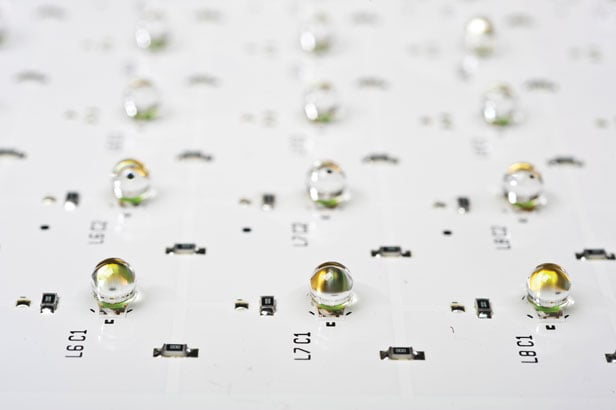One Step Forward, One Step Back for Concentrated PV
Many analysts and entrepreneurs foresee a healthy future for concentrated solar photovoltaic technology, but a massive oversupply of commodity solar panels is giving some investors cold feet.

Pioneering concentrated PV company SolFocus yesterday said it has restructured itself for a sale in the next few months and laid off most of its employees. The company, which has raised about $200 million, has a healthy pipeline of projects behind the 15 megawatts already installed. But its venture capital investors are unwilling to continue putting money into the company, which is not profitable.
A number of CPV companies have had to shut down or restructure because of severe downward price pressure for solar power. Startup GreenVolts said in September one of its investors, ABB, decided to pull out, which led to a sale of GreenVolts’ assets. Long-time CPV supplier Amonix earlier this year shut down a planned factory in Nevada because of soft demand. (See, Concentrating Solar PV Company Amonix Shutters Factory.)
But it hasn’t been all bad news for CPV. Startup Semprius said yesterday that Pratt & Whitney Rocketdyne will install 200 kilowatts worth of its solar collectors at the Edwards Air Base in California for a demonstration program, a sign of confidence in Semprius’ novel technology
CPV panels traditionally use lenses and mirrors to concentrate sunlight to create the equivalent of several hundred “suns.” The light is focused onto high-efficiency triple junction cells, getting more electricity per area than conventional solar panels which have an efficiency of about 20 percent. Amonix last month said it achieved 33.5 percent conversion of sunlight to electricity. But these CPV systems, which only work in very sunny areas and require trackers to follow the sun, are more complex and costly to make.
The largest CPV plant in the U.S. is a 30-megawatt plant operated by Cogentrix in Colorado and analysts say the technology has advantages. IMS Research recently came out with a report predicting 1.2 gigawatts of CPV installed by 2016 because the technology has the potential to deliver a lower cost of energy than flat-plate solar panels.
New technology could make CPV more attractive and cost effective. Semprius’ solar collector, which has been able to achieve efficiency of 33.9 percent, is completely different than traditional CPV systems.
Its collectors are made by placing hundreds of tiny triple junction, gallium arsenide cells on an inexpensive substrate. This microcell approach dissipates heat better than conventional CPV systems and the company projects it can get its costs to 10 cents per kilowatt-hour for utility-scale solar plants. (See, Concentrated Solar Startup Sets a New Efficiency Record.)
The Edwards Air Force Base demonstration is part of the company’s strategy to scale up, get a realistic cost estimate for power, and determine if it really has differentiated technology. Given the rapidly falling costs, CPV companies like Semprius will also need patient investors.
Keep Reading
Most Popular
How scientists traced a mysterious covid case back to six toilets
When wastewater surveillance turns into a hunt for a single infected individual, the ethics get tricky.
The problem with plug-in hybrids? Their drivers.
Plug-in hybrids are often sold as a transition to EVs, but new data from Europe shows we’re still underestimating the emissions they produce.
What’s next for generative video
OpenAI's Sora has raised the bar for AI moviemaking. Here are four things to bear in mind as we wrap our heads around what's coming.
Stay connected
Get the latest updates from
MIT Technology Review
Discover special offers, top stories, upcoming events, and more.